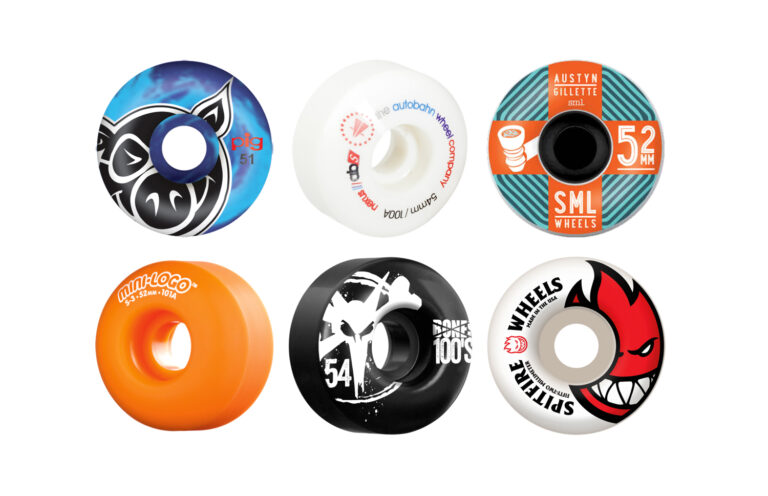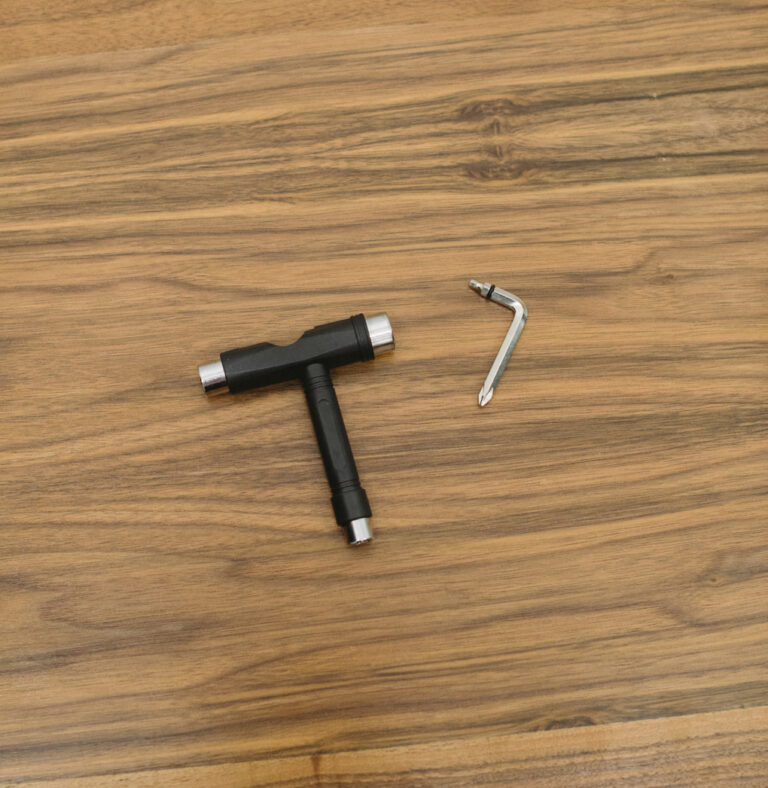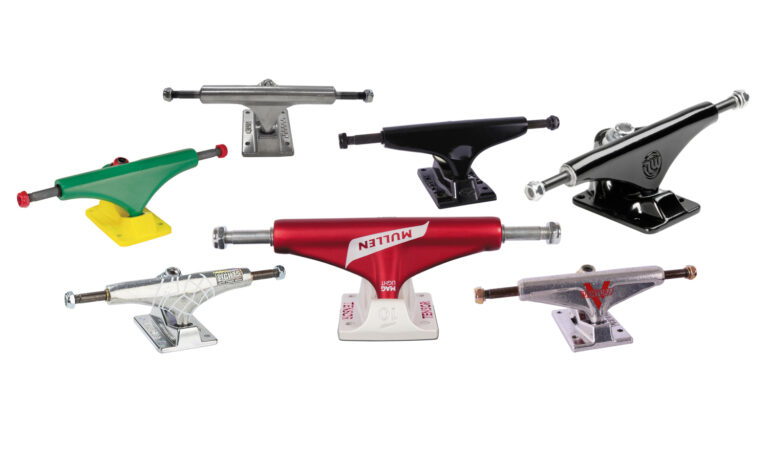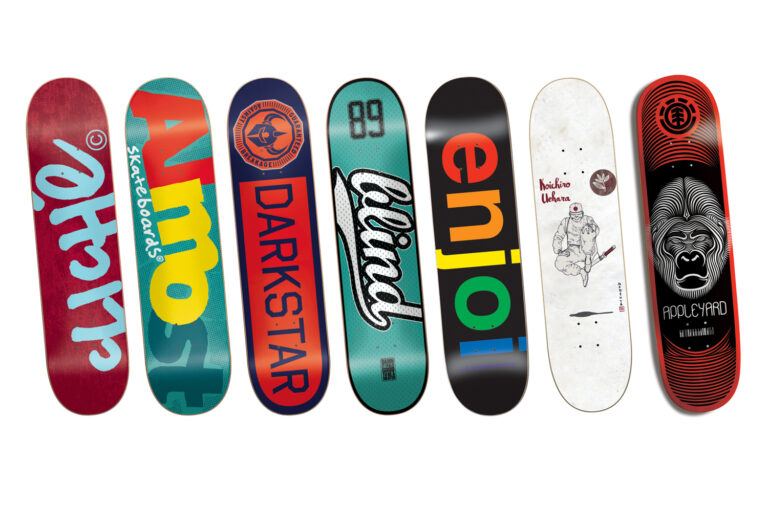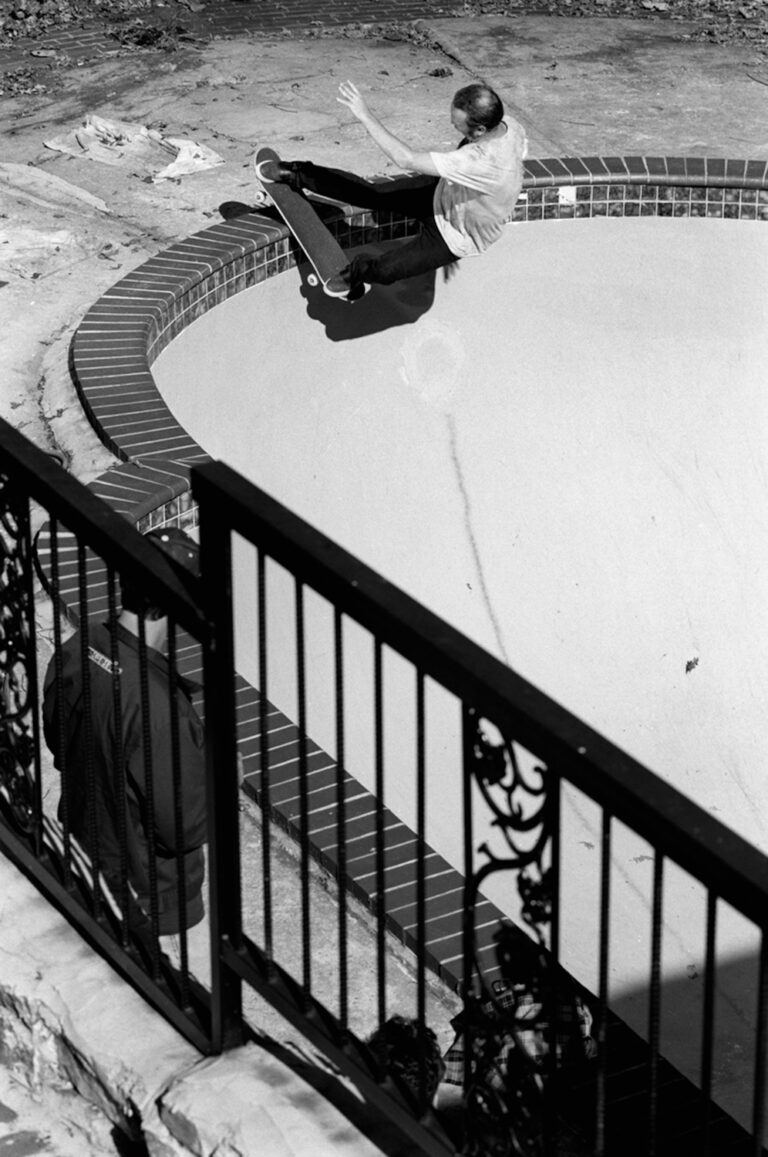
Whilst it’s not compulsory to wear a skateboard helmet and safety equipment when skating, it’s strongly advised, especially for absolute beginners in busy skateparks…
From Sidewalk Basics – Autumn 2013
Learning the basics can be dangerous at first and you can slam when you’re least expecting it so it’s better to be safe. Most professionals (outside of vert skating) choose not to use safety equipment but this is a decision made after years of experience, beginners should definitely consider using some until they’re confident enough to decide for themselves.
Here’s a rundown on the most common pieces of safety equipment and the protection they offer.
Helmet
 The benefits of wearing a skateboard helmet are obvious: no fall onto your head is ever good, never mind if it’s from a height. The open-faced helmet shown here provides as much protection as possible without affecting your peripheral vision. The hard plastic shell houses polystyrene and then a layer of softer foam to absorb the impact of any slam whilst still being comfortable to wear.
The benefits of wearing a skateboard helmet are obvious: no fall onto your head is ever good, never mind if it’s from a height. The open-faced helmet shown here provides as much protection as possible without affecting your peripheral vision. The hard plastic shell houses polystyrene and then a layer of softer foam to absorb the impact of any slam whilst still being comfortable to wear.
Kneepads
Your knees take a lot of abuse whilst skateboarding and tend to be the first point of contact with the floor in any slam. The main benefit of kneepads is that they will protect the bones and ligaments in the knee when you fall. Injuries in this area take a notoriously long time to heal and can give you problems throughout your time skating. Kneepads can be worn either on the outside or inside of your trousers depending on how bulky they are.
Elbow pads
 Elbow pads work in exactly the same way as kneepads and will protect your elbow joints during slams.
Elbow pads work in exactly the same way as kneepads and will protect your elbow joints during slams.
Wrist guards
Like your knees, your wrists will take a fair bit of abuse whilst you are mastering the basics, as they tend to be one of the first things to hit the floor when you fall. Wrist guards provide support for your wrists and the padding will help absorb the impact of a slam.

